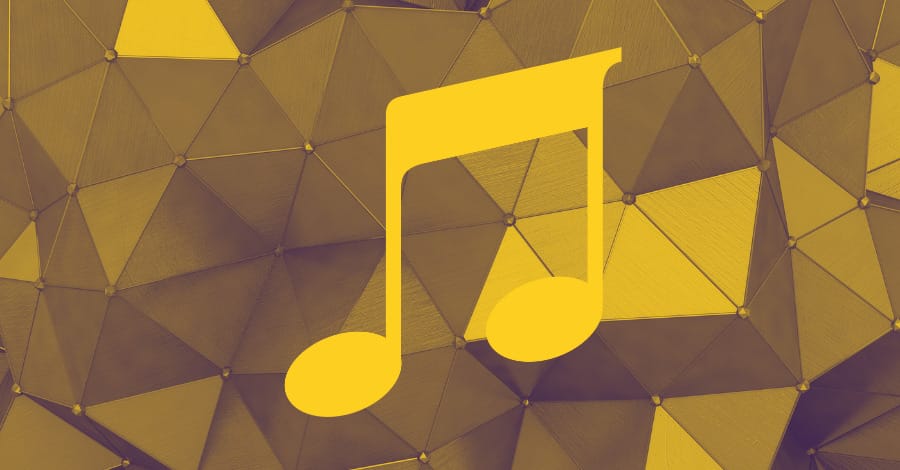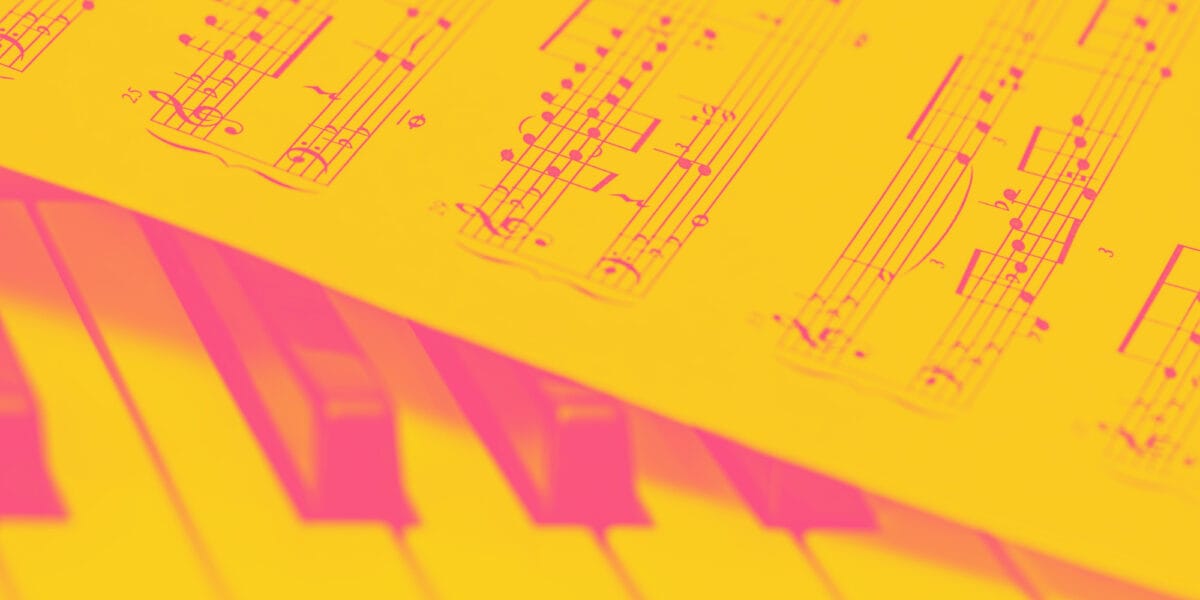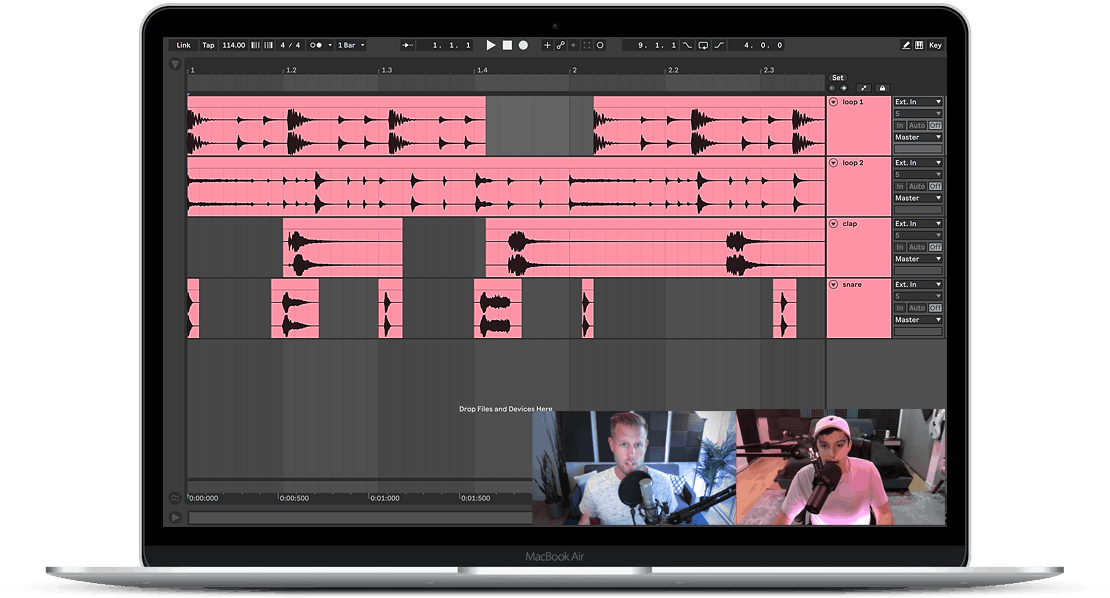How to Write Incredible Melodies: The Ultimate Guide
“Melodies are the heart and soul of music, the invisible thread that weaves emotions into sound. They have the power to inspire, uplift, and resonate with people in ways that words alone cannot.”
— Ludwig van Beethoven
Ready to learn how to write melodies? We're going to be talking about those unforgettable hooks that make your listeners stop in their tracks and feel every note. If you've ever wondered how to write melodies that evoke genuine emotion and leave a lasting impression, you've come to the right place.
In this guide, we're going to dive headfirst into the world of writing melodies. We'll unlock the secrets that make them so captivating, the tricks that make them stick in our heads, and the techniques that give them that undeniable depth. It's time to explore the importance of melodies in music and uncover the various characteristics that make them truly special.
By the time you reach the end of this ultimate guide, you'll be armed with an arsenal of knowledge and tools to write incredible melodies. Get ready to unleash your creativity and embark on a journey to master the art of crafting unforgettable melodies that will resonate with your audience. It's time to make your music soar.
Understanding Melodies

At the core of every memorable piece of music lies a well-crafted melody. Melodies are the melodic lines and musical phrases that form the backbone of a composition, carrying the listener through a captivating sonic journey.
A melody can be further defined as a sequence of musical notes played in succession, forming a coherent and musical idea. It is the primary vehicle for conveying music's emotions, moods, and stories. The components of a melody encompass pitch, rhythm and contour each playing a crucial role in shaping its unique identity.
Pitch refers to the specific frequency of a musical note. The arrangement of pitches within a melody creates melodic intervals, which contribute to the overall shape and movement of the musical phrase.
Rhythm, conversely, determines the pattern of durations and accents within the melody, providing its distinctive groove and rhythmic feel.
The Contour of a melody refers to its overall shape or trajectory, whether it rises, falls, or remains relatively stable. It gives a sense of direction and tension, guiding the listener through various musical moments. From soaring, uplifting melodies to melancholic and introspective ones, the contour shapes the emotional journey of a song.
Carefully chosen notes, rhythms, and contours, melodies can resonate deeply with listeners, connecting on a visceral and emotional level.
Developing Melodic Ideas

When you're trying to understand how to write incredible melodies, a solid foundation of creative ideas is essential. This is done by crafting a melodic concept or theme to experimenting with scales, modes, intervals, and patterns.
Creating a melodic concept or theme forms the starting point of your melodic journey. It involves identifying the mood, character, or story you want to convey through your melody.
For example, if you aim to evoke a sense of mystery, you might explore minor scales or chromatic intervals to infuse a haunting quality into your melody. On the other hand, if you're aiming for a playful and upbeat melody, major scales and lively rhythmic patterns can help you achieve that desired vibe.
Major and minor scales provide the foundation for many melodies, offering a range of emotions from joyful and triumphant to somber and introspective.
Beyond the diatonic scales, venturing into modes such as Dorian, Lydian, or Mixolydian can add unique tonalities and evoke specific musical styles or cultural influences.
Here’s an example of various scales. Major scale. Notice the different feelings each scale resonates:
Experimenting with melodic intervals and patterns allows you to create distinctive and memorable melodic phrases. Consider the opening motif of Ludwig van Beethoven's Symphony No. 5, which consists of a short but powerful four-note pattern (G-G-G-Eb) that immediately captures the listener's attention.
Playing with intervals, such as leaps or steps, can generate tension, excitement, or a sense of calm within your melody.
Crafting Memorable Melodies

Repetition and Variation
Using repetition and variation effectively is a powerful tool for creating memorable melodies. Repetition of certain melodic phrases or motifs helps establish familiarity and catchiness, allowing listeners to easily grasp the musical idea.
Consider the instantly recognizable melody of "Levels” by Avicii, where the opening three-note motif is repeated throughout the composition, reinforcing its melodic identity.
However, it's important to balance repetition with variation to avoid monotony. By introducing subtle variations in rhythm, contour, or harmonic context, you can add a fresh twist to the melody while retaining its essence.
Predictability
Balancing predictability is another key aspect of crafting memorable melodies. While listeners often appreciate a certain level of predictability in melodies, too much predictability can lead to boredom.
Conversely, an overly unpredictable melody can be disorienting. Striking the right balance ensures that your melodies are satisfyingly familiar and delightfully surprising.
Take the Beatles' iconic song "Yesterday," with its simple and predictable melodic contours but featuring unexpected harmonic choices that give it a distinct touch of surprise and emotional depth.
Hooks and Motifs
Hooks are catchy melodic phrases or motifs that instantly grab attention and become the defining feature of a song. Think of the infectious whistle melody in Maroon 5's "Moves Like Jagger" or the instantly recognizable guitar riff in Deep Purple's "Smoke on the Water."
By crafting hooks and motifs that are catchy, memorable, and easily singable, you create a musical anchor that stays with the audience long after the song ends.
Enhancing Melodies with Harmony

If you truly want to understand how to write better melodies, you also have to understand harmony. The marriage between melody and harmony is a cornerstone of music composition, creating depth, richness, and emotional impact. They are interconnected, influencing and shaping each other.
Melodies provide the melodic framework, while harmonies provide harmonic support and context. Together, they create a symbiotic relationship, enhancing the emotional and structural aspects of the composition.
Think of the song “The Middle” by Zedd, Grey, and Marren Morris. The hook in this song is so powerful because it’s accompanied by harmonies driven beneath it. The chords the harmonies create greatly enhance the main melody. Selecting chords complementing the melody, you can emphasize certain emotional qualities or create tension and release.
Experiment Outside The Key
Other techniques you can use to enhance your music include experimenting with modulation and chromaticism. Modulation is where the key of a composition changes, which can create shifts in mood and intensity.
Chromaticism is the use of notes outside the key. This can add moments of tension and intrigue. One notable example of chromaticism in EDM can be found in the hit song "Clarity" by Zedd featuring Foxes.
In "Clarity," the chorus section prominently features a chromatic descending bassline that adds a sense of musical color and unexpectedness. The bassline descends in half steps, moving from the root note of the chord to the note a half step lower before resolving back to the next chord.
This chromatic descent creates a subtle but effective tension that enhances the emotional impact of the song.
Adding Dynamics and Expression

Using chords and progressions effectively is key to enhancing the expressiveness of your melodies. The choice and arrangement of chords can significantly impact the emotional impact of your composition. For instance, employing extended chords, such as seventh or ninth chords, can add complexity and depth to your harmonies.
Another way to create more expressiveness and dynamics in your song is using dissonant chords or unexpected harmonies. Then immediately following those by a resolution or a return to the normal/familiar harmony.
The bridge of the song “Easier” by 5 Seconds of Summer starts with the familiar chords F major, C major, and then B flat major. But shortly after they play the Bb major, they switch it to Bb minor to build tension for the next phrase.
In the second phrase, they completely replace the Bb chords with G major, adding expression and dynamics to the progression.
Analyzing and Studying Great Melodies

Great melodies transcend genre boundaries, capturing our attention and resonating deeply within us. Whether it's the timeless allure of a classical symphony or the infectious hooks of a chart-topping pop song, there are underlying principles that make these melodies stand out.
Analyzing melodies from different genres, we can identify common threads and understand the elements contributing to their greatness and this can help us understand how to write better melodies. For example, the melodic contour, rhythmic patterns, and use of intervals all play a role in shaping a melody's character and emotional impact.
While studying melodies by just listening to the music can be challenging at times, many sources around the internet have converted hit songs into Midi so you can see the chords in your Piano roll.
One great tool for this is HookTheory.com. In this website, you can search for popular songs and display what chords and melodies they are using in the song. You can even download the music information as MIDI to experiment with it in your DAW.
Interpolation and Borrowing Parts of Great Melodies

Interpolation and borrowing can greatly enhance your music as well has help you understand how to write better melodies. Incorporating elements from well-known melodies, you can tap into the emotional resonance and familiarity that listeners have with those melodies.
This connection engages the audience on a deeper level, evoking nostalgia and powerful emotions. The blend of the familiar and the new creates a bridge that allows listeners to appreciate and connect with the music uniquely.
Famous Examples of Interpolation
Daft Punk's "Harder, Better, Faster, Stronger" interpolates a segment from Edwin Birdsong's "Cola Bottle Baby" to create a fresh and infectious electronic anthem. This amalgamation of ideas sparks innovation and allows artists to craft compositions that resonate with a wide range of listeners.
It’s important to add a personal touch to borrowed melodies. Modify the borrowed parts through rhythmic alterations, melodic variations, or harmonic reinterpretations. By infusing their unique style and artistic vision into the borrowed elements, composers ensure that the resulting composition becomes a reflection of their own creative identity.
Another example of interpolation and borrowing parts from other songs is “I’m Good” by David Guetta and Bebe Rexha. This song borrowed melody parts and concepts from the Eiffel 65 hit from 1998 called “Blue (da ba dee).”
If you listen to both, it’s apparent the familiarity and crossover between the two songs. But at the same time, you’ll notice the variation and personal touch David and Bebe added to their version of the song.
Borrowing and Interpolating Example 1 - Levels by Avicii
With how powerful studying and interpolating from famous melodies is, we encourage you to take action to take advantage of this powerful tool. One thing you can do to get started is to grab some of the famous MIDI progressions from our (FREE) Producer Creators Toolkit and start experimenting with interpolating.
First, take the iconic melody from Avicii's song “Levels” and listen to it as-is.
Next, try experimenting with syncopation. Here’s an example of something you could try:
Then take that one step further. Maybe remove, add, or shift some notes. It could now sound something like this:
Borrowing and Interpolating Example 2 (“Shelter” by Madeon & Porter Robinson)
Let’s try interpolating and borrowing in a more complex example. Take the song “Shelter” by Madon and Porter Robinson for a spin. Here’s how it sounds originally:
Let’s take this one step further and change some of the notes and maybe add/subtract a few:
Melody Development Exercises

The best way to learn how to write incredible melodies is the same way you get to Carnegie Hall… PRACTICE! Cliche jokes aside, the more you practice writing melodies, the better you get. Your first melodies are probably going to be bad, but that’s ok. Even the pros wrote bad melodies when they were first starting.
Here are some things you can do to improve your melody-writing skills:
1. Practicing Melodic Improvisation:
Set aside dedicated time for melodic improvisation. Choose a key or a chord progression and allow yourself to freely explore different melodic ideas over it.
This exercise helps you develop your melodic instincts, improve your phrasing, and discover unique melodic patterns and motifs.
2. Collaborating with Other Musicians:
Collaborating with peers can be an excellent way to develop melodies. Engage in jam sessions or writing sessions where you can bounce ideas off each other and co-create melodies. This collaborative process can introduce fresh perspectives and inspire new melodic directions.
3. Engaging with Melodic Writing Prompts and Challenges:
In the Hyperbits Masterclass, we cover exercises to help students practice writing chords and melodies. One thing we teach is to seek melodic writing prompts or challenges to push your creativity.
These prompts can be specific themes, emotions, or constraints like using a limited number of notes or creating melodies within a certain time frame. Engaging with such prompts forces you to think outside the box and expand your melodic vocabulary.
4. Analyzing and Recreating Melodies:
Select melodies from songs you admire and analyze their structure, phrasing, and harmonic context. Once you've deconstructed them, try to recreate and reimagine those melodies in different keys, tempos, or styles.
This exercise helps you understand the thought process behind successful melodies and trains your ability to create similar impactful lines.
5. Exploring Different Scales and Modes:
Dive into the world of scales and modes to broaden your melodic palette. Experiment with different scales like major, minor, pentatonic, or exotic scales such as the Dorian, Mixolydian, or Phrygian modes. Each scale or mode brings a unique flavor to your melodies and can spark fresh ideas.
6. Singing and Vocalization:
Develop melodic sense by singing and vocalizing melodies. Sing along to your favorite songs, vocalize musical ideas, or simply hum melodies that come to mind.
This exercise helps you internalize melodic patterns, improves your ear for pitch and intervals, and fosters a deep connection between your voice and your musical ideas.
7. Variation and Expansion:
Take an existing melody, whether it's your own or someone else's, and experiment with variations and expansions. Change the rhythm, alter the phrasing, or add ornaments and embellishments to see how it transforms the overall feel of the melody.
This exercise trains your creativity and allows you to explore different facets of a melodic idea.
8. Melodic Contour Exercises:
Focus on the shape and contour of your melodies. Practice creating ascending, descending, or arch-shaped melodies. Explore intervals and leaps to add interest and expressiveness to your melodic lines. By honing your skills in shaping melodies, you can create captivating and memorable compositions.
Refining and Polishing Melodies

Once you have crafted a melody, the journey toward creating an incredible composition is far from over. Refining and polishing your melodies is a crucial step in the creative process that elevates them to their full potential.
One essential aspect of refining melodies is seeking feedback and constructive criticism. Share your melodies with friends or mentors (like the Hyerbits Masterclass instructors) who can provide valuable insights. This is one of the best methods for truly understanding how to write better melodies.
Embrace their perspectives and suggestions, as they can offer fresh ears that may uncover hidden opportunities for improvement.
Experimenting with different instrumentations and arrangements is another powerful tool for refining melodies. Explore how your melody sounds when played on different instruments or in various musical styles. Consider the impact of changing the tempo, dynamics, or rhythmic patterns.
Refining melodies often involves an iterative process of continuous improvement over time. Take the time to revisit your melodies periodically, allowing yourself to gain fresh insights and perspectives. Distance yourself from your initial creation and listen with a discerning ear. Notice any areas that feel repetitive, predictable, or lacking in impact.
Don't be afraid to take risks
Throughout the refinement process, it's essential to remain open to experimentation and embrace the unexpected. Sometimes great songs are a product of accidents. Allow yourself to break free from conventions and explore unconventional ideas.
Sometimes, taking risks and stepping outside your comfort zone can lead to the most remarkable and memorable melodies. Embrace the journey of discovery, and trust your instincts as you refine and polish your melodies.
BONUS: Melody Writing VSTs

We live in an exciting era where software and AI tools are flooding the music production space. Believe it or not, there are a growing number of VSTs out there that are geared towards helping you write melodies. Here are our favorites:
Captain Melody EPIC - Mixed In Key
Captain Melody Epic is probably the most powerful songwriting tool on the market. The interface is clean and easy to use. You can choose and control a lot of parameters about your melodies and it can even display the tension curve your melody creates.
Not only can it help you make great melodies, but it can also help you learn about melodies and what makes great melodies so good.
Melody Sauce is a big runner up competitor to Captain Melody. This plugin takes a different approach to building melodies using an AI-powered Phrase Builder. The interface is simple, and you don’t need to know as much music theory to use.
Tools like these won’t write the song for you, but they will help you improve your writing skills over time. Use the melodies these tools create as a starting point and build on them. Just like you would if you were interpolating from an already established melody.
Final Thoughts on How To Write Incredible Melodies
Throughout this journey, we've explored various aspects of how you can write melodies, from understanding the fundamentals to refining and polishing your compositions. Armed with this knowledge, you now have the tools to embark on your own melodic adventures and craft melodies that leave a lasting impact on your listeners.
Listen to a variety of melodies and analyze what makes them memorable. Sing and hum melodies to develop your melodic ear. Transcribe melodies you admire to study their structure and techniques. Practice melodic improvisation to develop your instincts and creativity.
Remember, trust your instincts and embrace your unique creative voice.
Happy producing!
These Might Also Interest You:
How To Write A Song: A Producer's Guide
The Best Way to Learn Music Theory (Music Theory for Dummies)
The Best Chord Progression Charts to Help You Compose Better Music








